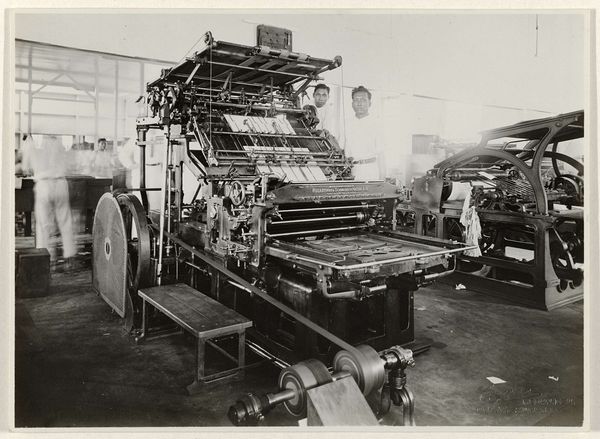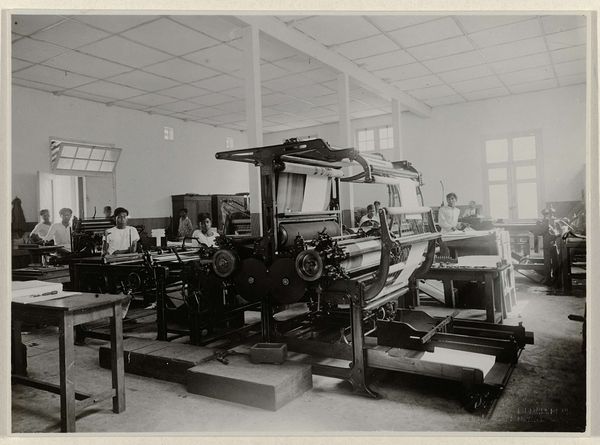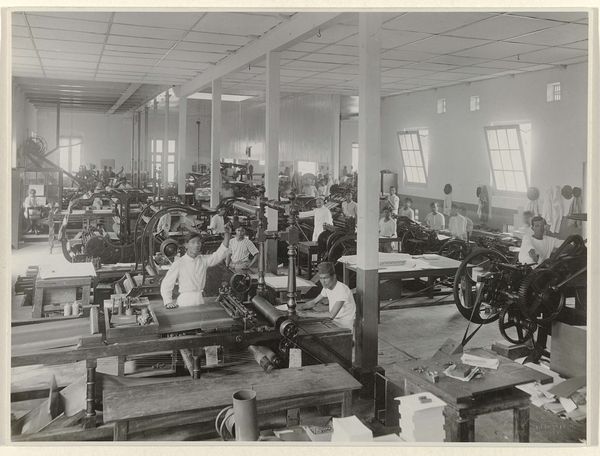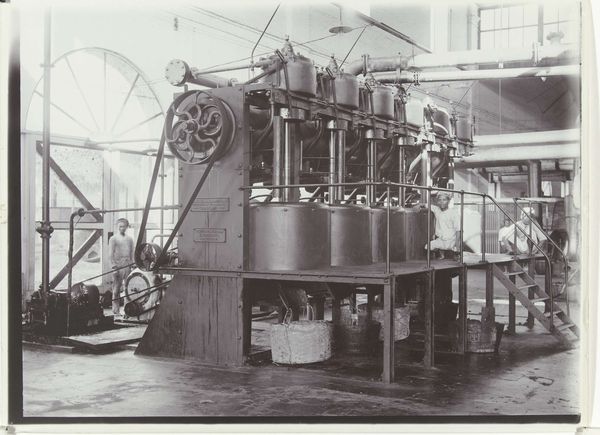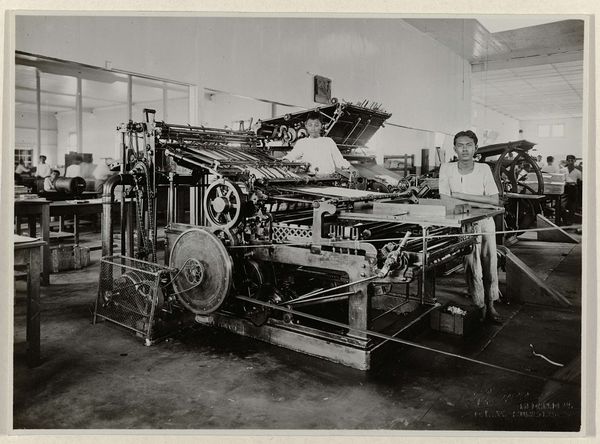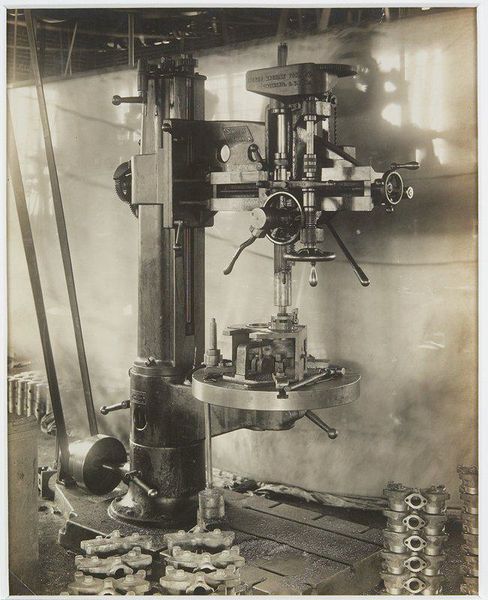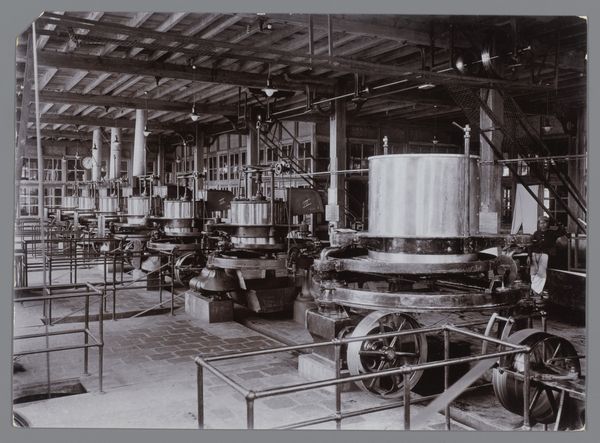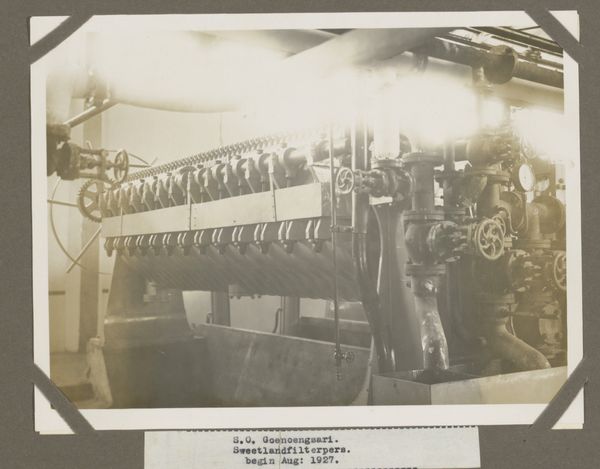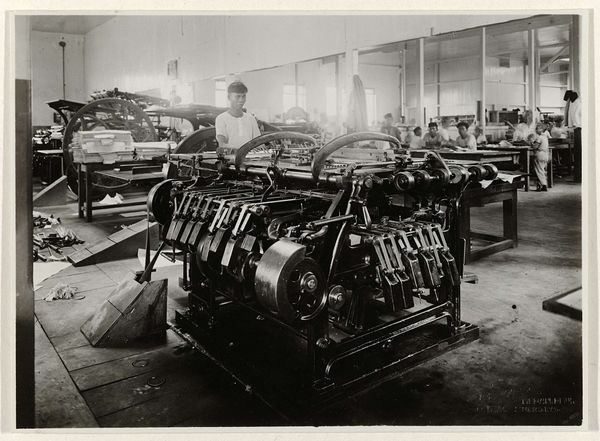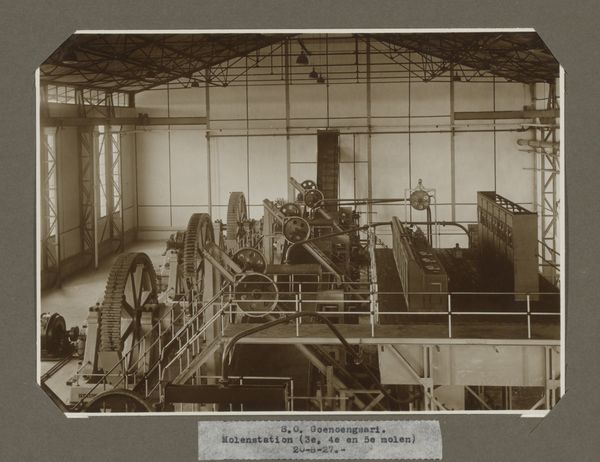
print, photography, gelatin-silver-print
#
print photography
# print
#
archive photography
#
photography
#
historical photography
#
gelatin-silver-print
#
monochrome photography
#
realism
Dimensions: height 108 mm, width 147 mm
Copyright: Rijks Museum: Open Domain
Curator: This gelatin silver print, titled "Babcock bij het inlegapparaat," was created in 1921 and presents a compelling image of industrial activity. Editor: The first impression is quite imposing! It feels like a study of contrasts, pitting the precision and scale of machinery against the human presence – but somehow flattened by the photographic lens into quiet submission. Curator: The image depicts workers operating a Babcock printing press. Given the socio-economic conditions of the early 20th century, the scale of this equipment symbolizes industry's transformation of labor and society, no? Editor: Undoubtedly. Notice how the laborers at their tables along the walls and the one near the press recede somewhat as part of the backdrop, becoming almost ghostly as figures near such potent instruments of mass production, echoing a general historical theme. Yet, paradoxically, one feels as though their humanity remains resilient because of the photograph itself, like the medium humanizing technology, but that is how I feel when I gaze at it… Curator: It’s interesting you mention paradoxes. Visually, the imposing nature of the printing press suggests efficiency, technological promise, maybe even progress; yet in monochrome, the print itself takes on the air of bygone eras and fading memories. Do you notice any specific iconographic echoes? The dark attire contrasting sharply with lighter backgrounds, framing the main press operators? Editor: I see visual languages emerging in it too. Certainly! I cannot dismiss it. Those darker shades visually imply specific labor demographics from back then, marking social tiers inside colonial frameworks perhaps. It acts almost like shorthand, symbolizing global capitalistic outreach. Curator: The photographic style, too, is significant. Realism prevails here; nothing’s embellished, and we glimpse workers at their machinery. How can this realistic and straightforward approach be interpreted within early twentieth-century photography? Editor: That very commitment reveals something valuable in what would otherwise pass by as purely routine factory work; photography makes visible not only tools themselves but relationships among these elements; each beam is an idea ready, each figure ready made a concept manifestable because somebody considered what image makes… Curator: Looking at this work has certainly provoked many lines of thought for me: questions surrounding identity and labor during an era marked by enormous change due primarily around new industrial innovations. Editor: Agreed. "Babcock bij het inlegapparaat" leaves much unsaid and lets history resonate through shades while the viewer decides the picture's final meaning on their own from beginning end all in it...
Comments
No comments
Be the first to comment and join the conversation on the ultimate creative platform.
